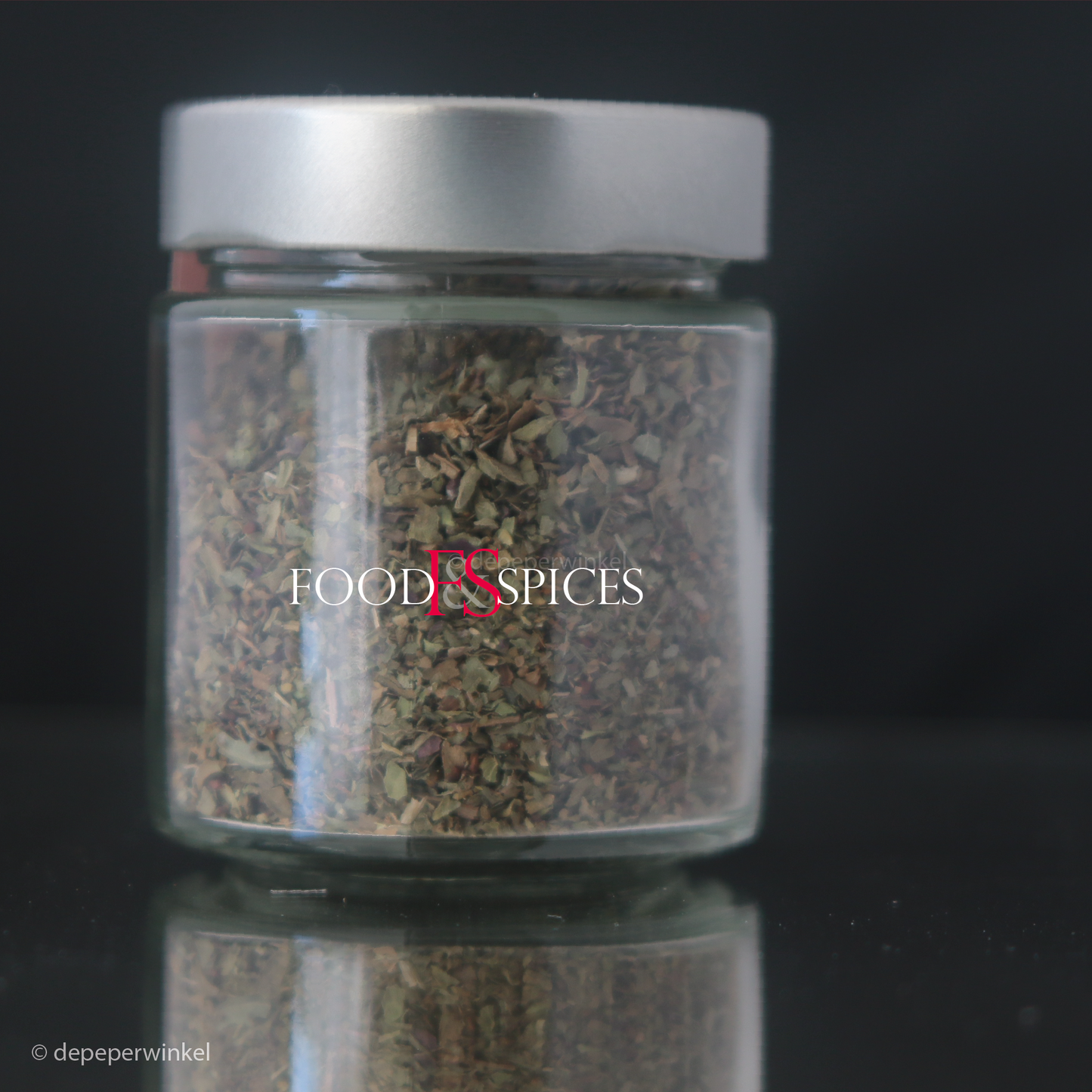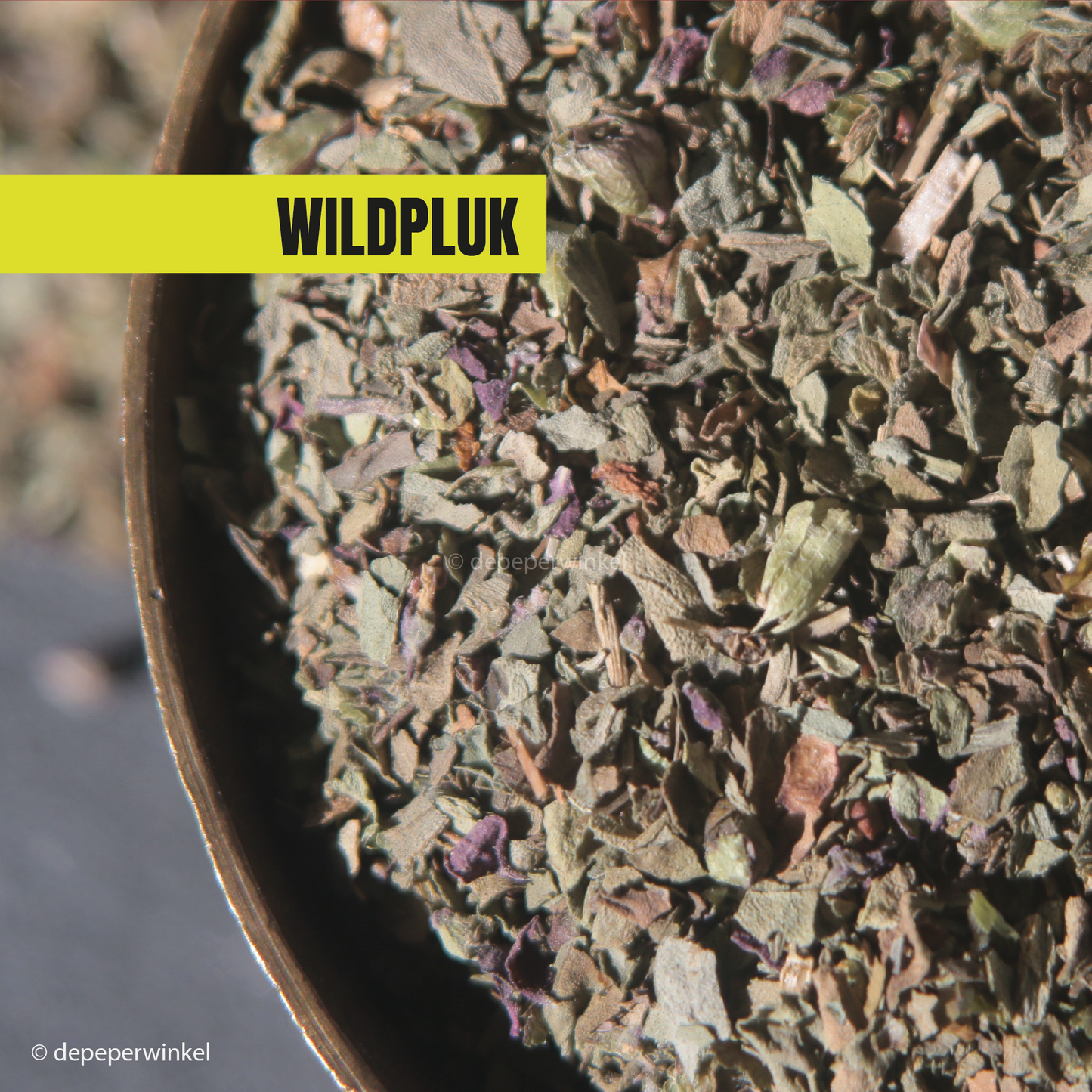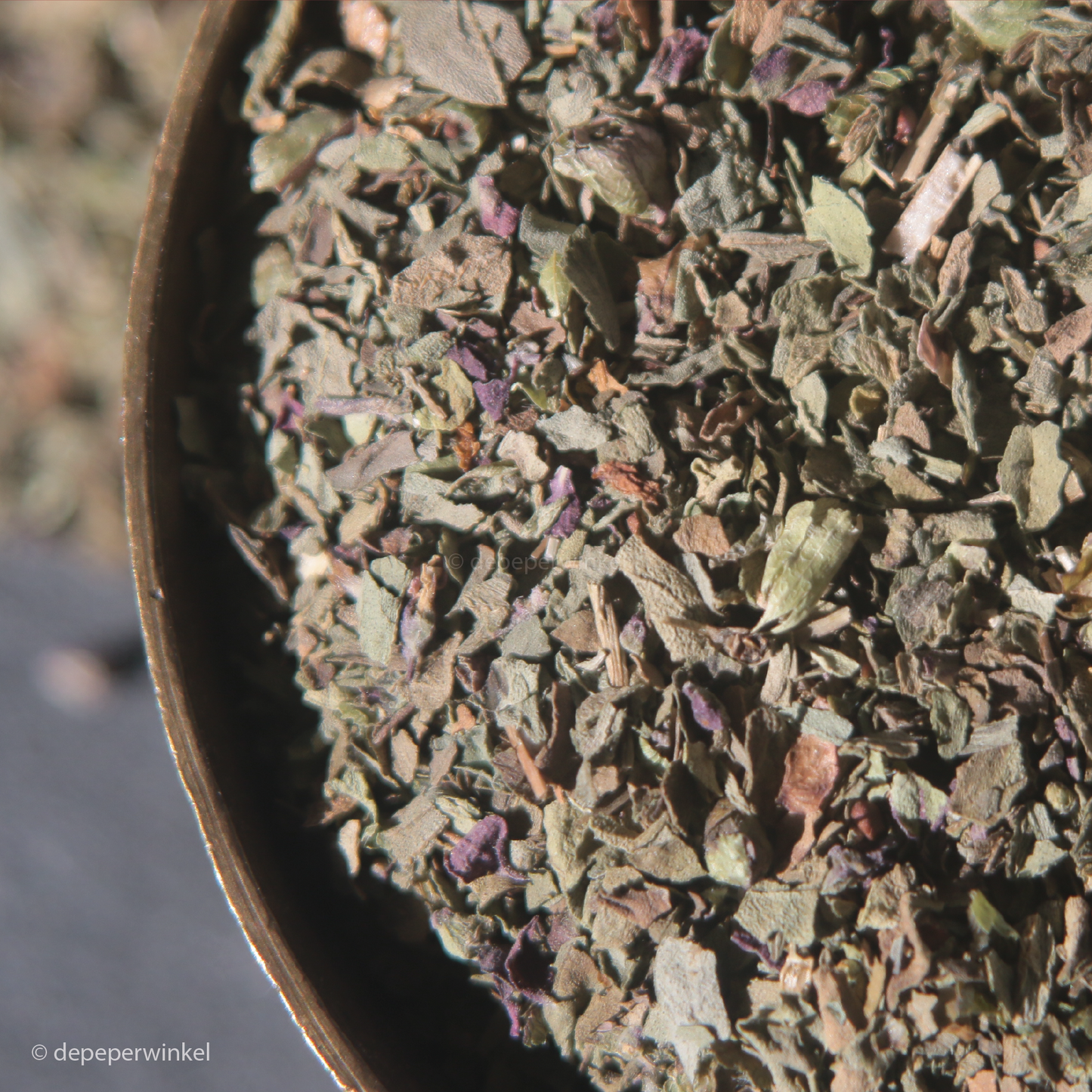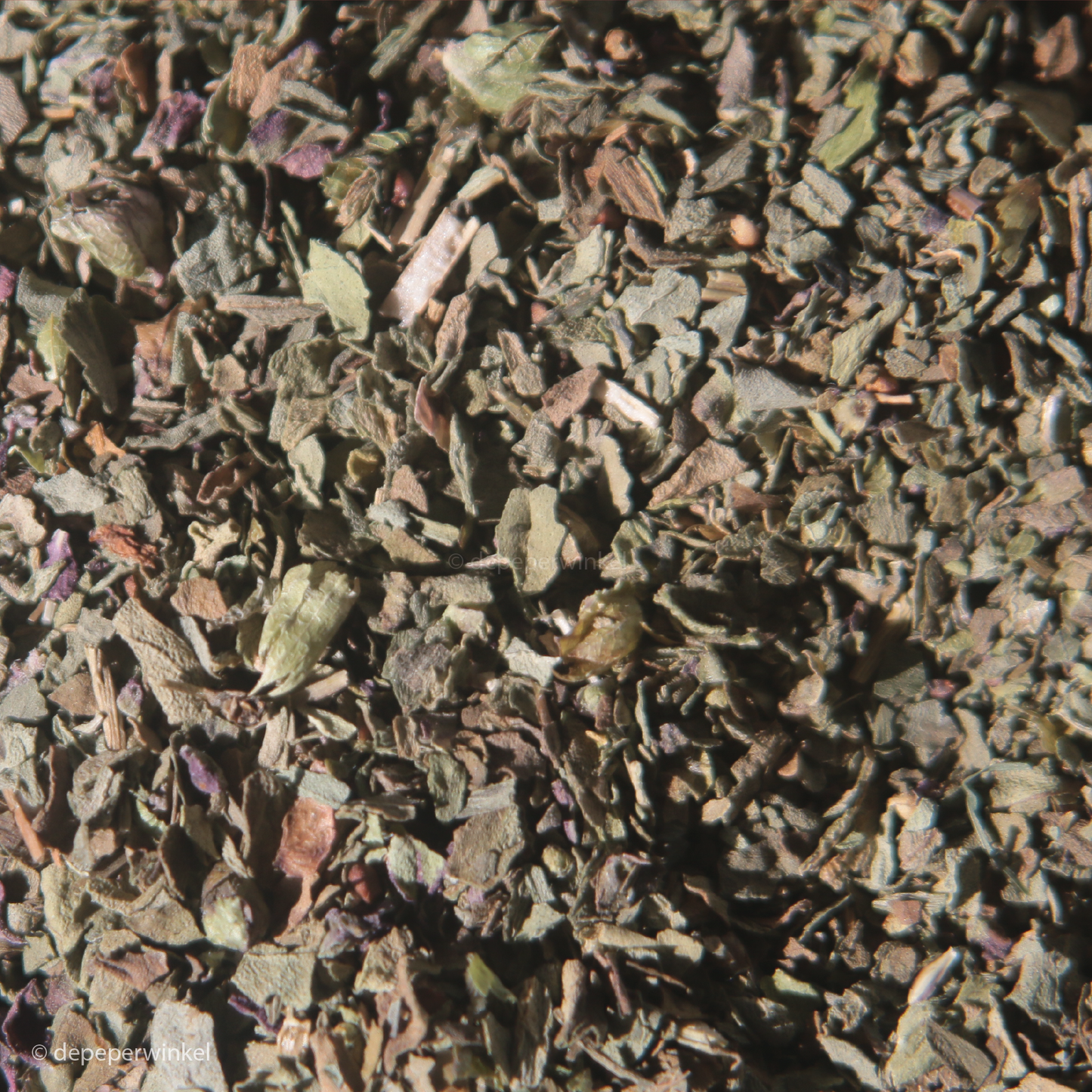depeperwinkel
Basil (vasilikos)
Basil (vasilikos)
In stock
Unable to load availability for pickup
This spicy basil is harvested on the island of Crete, where the mountain slopes are colored in summer by a carpet of flowering herbs. This wild basil is distinguished by its high anise camphor (anethole) content, giving it a strong, sweet flavor, similar to that of Thai basil.
This wild basil comes from the Ocimum basilicum, one of the many herbaceous plants native to the island of Crete. It should not be confused with Clinopodium vulgare, the true wild basil, which also grows on Crete and is also used as a herb.
Basil is sometimes called the "king of herbs," but its official name is sweet basil. Nowadays, we mainly know the plant from kitchen basil, usually a variety of Basilico Genovese, the stereotypical Italian basil.
Sweet basil originates from India, where 'tulsi', the collective name for various types of basil, is a sacred plant often planted in a specially created flowerbed called vindradas in front of the house.
Of all the basil varieties, wild basil and Thai basil are richest in anethole. This distinguishes this basil from the rather bland fresh basil. Our Cretan basil has a slightly sweet taste, but with distinct licorice notes, making it delicious with stewed fish (think haddock) and roast lamb, but also, of course, in pasta and on pizza.
For the famous Pesto Genovese, Italians prefer "lettuce basil," with its slightly crunchy and slightly
Smell and taste
Only the leaves of basil are used as a herb. The characteristic odor is that of methyl chavicol, which is also found in tarragon and chervil. The wide Basil's rich flavor and aroma make it a perfect match with lemon, lime, mint, cloves, anise, and star anise. Some of the aromatic and flavoring compounds (essential oils) in basil include:
- methyl chavicol (estragole), anise-like, as in tarragon and chervil,
- anethole, anise-like,
- methyl eugenol, spicy, woody and sweet, like cloves,
- terpine-4-ol, sweet woody and
pepper y aroma, like juniper berry, - linalool, responsible for the fresh floral scent, for the scents of rosewood and coriander,
- methyl cinnamate, fruity, sweet taste like strawberries, scent of cinnamon,
- 1,8-cineole, eucalyptol, the refreshing taste of myrtle (and eucalyptus oil),
- (E)-caryophyllene, a flavor between clove and turpentine, and
- limonene, the scent of lemon peel.
Usage
The flavor of dried basil is best when the leaves are added towards the end of the cooking time, and allowed to absorb water again, develop flavor, and be incorporated into the dish for a maximum of ten minutes.
Wild basil pairs beautifully with oregano, thyme, rosemary, and fennel seeds. Dosage: Instead of a tablespoon of finely chopped fresh basil, use a teaspoon of dried basil (and vice versa). Basil is used in a "sea of classic dishes" from the Mediterranean, as well as in Indian cuisine.
Features:
- 100% dried leaf (ripped, virtually no twigs)
- grows in the wild, picked by hand
- origin: Greece (Crete)
Assortment
- available in glass and stand-up pouch (no test tubes)
- glass jar contains 20 grams
- larger quantities on request
Gift wrapping
- The jar is available in a tasteful gift packaging, consisting of a cube box filled with black tissue paper.
- For an overview of our gift packaging, please refer to the section gift wrapping
Save:
- store your basil in a closed container
- preferably store in a dark, dry and cool place
- best before October 2026 (10-2026)
- This expiration date is an indication
Batch number
The batch number helps us track which batch an item originates from. It's listed on the packing slip and invoice.
Share







